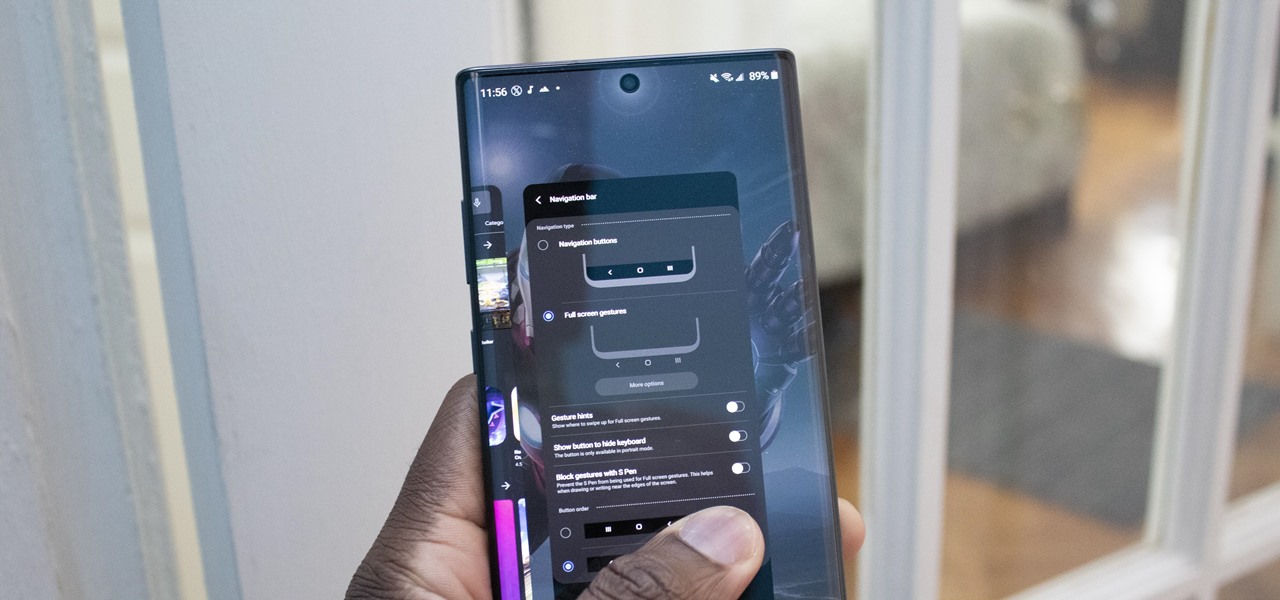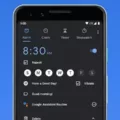One of the most convenient features of Android devices is the ability to quickly switch between different apps. This can be especially useful when you need to multitask or simply want to navigate between your favorite applications seamlessly. In this article, we will explore the various methods available to swap between apps on Android.
Android offers different navigation options depending on the version of the operating system and the device you are using. Let’s start with the most common method: gesture navigation. If your device supports gesture navigation, you can easily switch between apps by swiping up from the bottom edge of the screen. This will take you to the Home page. To switch between your most recent apps, simply swipe up from the bottom, hold, and then release. This will bring up the app switcher, allowing you to select the app you want to switch to.
If your device uses 2-button navigation, the process is slightly different. To switch between your two most recent apps, swipe right on the Home button. This will instantly take you to the previous app you were using. If you want to access the app switcher, simply swipe up from the bottom and hold. This will display a list of your recently used apps, and you can select the one you want to switch to.
Now, let’s talk about customizing the swipe action for specific apps, such as Google Messages. Please note that the steps may vary slightly depending on the version of Android you are using. To change the swipe action for Google Messages, follow these steps:
1. Open the Google Messages app on your Android device.
2. Tap on the three-dot menu icon located in the top right corner of the screen.
3. From the drop-down menu, select “Settings”.
4. In the Settings menu, scroll down and tap on “Swipe actions”.
5. Here, you will find different swipe actions that you can customize for different gestures.
6. To change the swipe action for Google Messages, tap on the desired gesture (e.g., swipe left or right).
7. Select the action you want to assign to that gesture (e.g., Archive, Delete, Mark as read, etc.).
8. Once you have made your selection, you can exit the settings menu.
By customizing the swipe action for Google Messages or any other app, you can optimize your navigation experience and make it more intuitive for your needs.
Android provides various methods to swap between apps, including gesture navigation and 2-button navigation. By mastering these techniques and customizing swipe actions for specific apps, you can enhance your productivity and efficiency while using your Android device. So, go ahead and explore these features to make the most out of your Android experience.

How Do You Quick Switch Between Apps on Android?
To quickly switch between apps on Android, you have a few options based on your device’s navigation system:
Gesture navigation:
1. If you’re using gesture navigation, which is available on newer Android versions, start by locating the bottom of your screen.
2. Swipe from left to right along the bottom edge of the screen.
3. This action will switch you to the most recent app you were using.
2-button navigation:
1. If you have 2-button navigation enabled, look for the Home button located at the bottom center of your screen.
2. Swipe right on the Home button to switch between your two most recent apps.
3. This allows you to easily switch back and forth between the apps you were using.
Please note that the steps provided may vary slightly depending on your device and Android version.
If you have gesture navigation, swipe from left to right along the bottom of the screen to quick switch between apps. For 2-button navigation, swipe right on the Home button to switch between your two most recent apps.
What is Android App Switcher?
The Android app switcher is a functionality within the Android operating system that enables users to seamlessly switch between different open applications or tasks on their Android device. It provides a convenient way to navigate between various apps without having to close and reopen them.
When you open multiple apps on your Android device, they remain active in the background, allowing you to switch between them effortlessly using the app switcher. This feature is especially handy when you need to quickly access information from one app while using another.
Here’s how the Android app switcher works:
1. Accessing the app switcher: To open the app switcher, you typically need to tap the square or recent apps button located at the bottom of the screen. This button may vary depending on the Android device or version of the operating system you are using.
2. Viewing open apps: Once you access the app switcher, you will see a visual representation of the currently open apps in the form of cards or thumbnails. Each card represents an individual app and displays its icon, name, and a snapshot of the app’s current state.
3. Switching between apps: To switch between apps, simply swipe left or right on the screen or scroll through the cards horizontally. The active app will be displayed in the foreground, while the other apps remain in the background.
4. Closing apps: If you want to close an app from the app switcher, you can swipe it off the screen either to the left or right. This action removes the app from the list of open apps and terminates its background processes, freeing up system resources.
Benefits of Using the Android App Switcher
– Multitasking: The app switcher allows you to effortlessly switch between different tasks or apps, enhancing your ability to multitask on your Android device.
– Quick access: By keeping your frequently used apps in the app switcher, you can easily jump back and forth between them without needing to navigate through your app drawer or home screen.
– Efficient workflow: The app switcher streamlines your workflow by eliminating the need to constantly open and close apps, saving you time and effort.
The Android app switcher is a valuable tool that enables seamless switching between open apps on Android devices. It enhances multitasking capabilities, provides quick access to frequently used apps, and optimizes your workflow by eliminating unnecessary app reopening.
How Do You Switch Between Apps on Android 13?
To switch between apps on Android 13, you can use the gesture navigation feature. Here’s how:
1. Start by swiping up from the bottom edge of the screen and then release your finger. This will take you to the Home page.
2. If you want to switch to a recently used app, swipe up from the bottom edge of the screen and hold your finger there. After holding for a moment, a list of your recently used apps will appear.
3. While still holding your finger on the screen, move it left or right to scroll through the list of apps. When you find the app you want to switch to, simply release your finger.
4. To move back to the previous app, swipe from the left or right edge of the screen towards the center. This gesture will take you back to the previously used app.
How Do You Change the Swipe Settings on Your Android?
To change the swipe settings on your Android device, follow these steps:
1. Open the “Settings” app on your Android device. You can usually find it in your app drawer or by swiping down from the top of the screen and tapping the gear icon.
2. Scroll down and tap on “System” or “System & Device,” depending on your device model.
3. Look for the “Gestures” or “Gestures & Inputs” option and tap on it.
4. In the gestures menu, you may find an option called “Swipe actions” or something similar. Tap on it to access the swipe settings.
5. You should see a list of available swipe actions, such as “Swipe up,” “Swipe down,” “Swipe left,” and “Swipe right.” Tap on the action you want to change.
6. This will open a submenu with different options for that particular swipe action. Choose the option that you prefer from the list.
7. If you want to completely disable a swipe action, look for an option like “None” or “No action” and select it.
8. Repeat steps 5-7 for any other swipe actions that you want to modify.
9. Once you have made all the desired changes, exit the settings menu. Your new swipe settings should now be in effect.
It’s worth noting that the exact steps and terminology may vary slightly depending on your Android device’s make and model, as well as the version of Android you are using. However, the general process should be similar across most devices.
Conclusion
The ability to swap between apps on Android devices is a convenient and efficient feature that enhances multitasking capabilities. There are various methods to switch between apps, depending on the navigation system used on the device.
For devices with gesture navigation, users can swipe up from the bottom edge of the screen to go to the Home page. They can also swipe up from the bottom, hold, and then release to switch between apps. Additionally, swiping from the left or right edge of the screen allows users to move back within the apps.
For devices with 2-button navigation, users can swipe right on the Home button to switch between their two most recent apps. This provides a quick and seamless way to move between tasks.
The app switcher feature on Android devices provides a smooth and intuitive experience for users, allowing them to effortlessly navigate between different open applications. This flexibility in swapping between apps enhances productivity and makes it easier to manage multiple tasks simultaneously.








